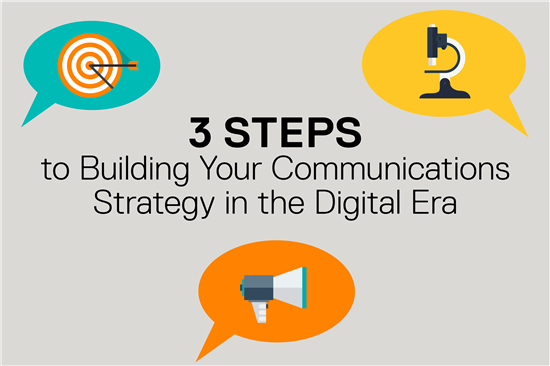Decoding the Buzzword: What is AI-Splaining and Why Should You Care?
Artificial intelligence (AI) rapidly transforms various aspects of our lives, from personal assistants to medical diagnoses. But with progress comes complexity and, sometimes, confusion.
Enter the latest phenomenon: AI-splaining.
AI-splaining refers to the act of someone with minimal or no expertise in AI attempting to explain the technology to others, often in a condescending or oversimplified manner.
It’s akin to “mansplaining,” but with artificial intelligence replacing gender as the subject of unwanted and unnecessary explanation.
Decoding AI-Splaining: From Bland Bites to Hidden Sprinkles
Please take no offense to this; there’s always a positive to every negative. Consider it like finding sprinkles in your salad — unexpected, maybe a little weird, but ultimately delicious.
Let’s explore the not-so-sweet side of AI-splaining first, then dive into the hidden sprinkles waiting to be savored.
Here’s why AI-splaining matters:
- It perpetuates misconceptions about AI: Oversimplified explanations can fuel misunderstandings about AI’s capabilities and limitations.
- It discourages genuine learning: When someone feels talked down to, they’re less likely to engage with and understand AI further.
- It creates an “expert vs. non-expert” divide: This undermines the collective understanding and development of AI technology.
Someone who cannot help but AI-splain may fail to see the fogged-over expressions on others. We all inwardly cringe at emails overloaded with emojis.
The same happens with AI-splaining. We’ve all seen it: imagine blank stares, furrowed brows, and polite nods masking complete confusion. This “deer in the headlights” look signifies the barrier AI-splaining can create, shutting down genuine interest and understanding.
So, how can we avoid AI-splaining?
Artificial intelligence evolves faster than your average smartphone upgrade in the whirlwind world of technology.
While exciting, this rapid progress can leave many feeling like they’re playing catch-up, piecing together information from news snippets, social media snippets, and the occasional enthusiastic friend.
It’s no wonder that the urge to “splain” AI to others arises.
But before you launch into a jargon-filled explanation, let’s hit the pause button.
While good intentions fuel AI-splaining, the road to confusion is often paved with good intentions too.
So, how can we navigate this terrain and cultivate genuine understanding instead of information overload?
The good news is it’s less about being an expert and more about fostering a collaborative exchange.
Let’s explore some fundamental principles for turning potential AI-splaining pitfalls into bridges of comprehension!
- Focus on understanding before explaining: Research first if you’re unsure about a specific AI aspect.
- Recognize individual knowledge levels: Tailor your explanation to the audience’s prior understanding.
- Embrace diverse perspectives: Everyone can contribute to the conversation about AI, regardless of their technical background.
- Use clear and concise language: Avoid jargon and focus on explaining the core concepts.
- Encourage open dialogue: Ask questions and welcome different viewpoints.
Remember, AI is a complex field, and we’re all still learning. By actively fostering collaboration and clear communication, we can move beyond AI-splaining and create a more inclusive and informed future for this transformative technology.
From Emoji Overload to A-ha Moments: Cracking the Code of Positive AI-Splaining
While AI-splaining can have negative consequences, there’s potential for a positive side under the right circumstances. Here’s how AI-splaining can matter positively:
- Bridging the Knowledge Gap:
Imagine you’re a small business owner unfamiliar with AI’s potential benefits. Excited about the technology, a friend explains how AI could automate repetitive tasks, freeing up your time for strategic decisions. This “splaining,” if done thoughtfully and tailored to your needs, could become a valuable learning experience and open doors to new opportunities.
- Building Excitement and Understanding:
AI enthusiasts passionate about the technology can act as ambassadors, generating interest and fostering a basic understanding among those still hesitant. This type of “splaining,” when done accurately and respectfully, can help break down fear and misconceptions, encouraging broader adoption and responsible development of AI.
- Encouraging Intergenerational Learning:
Grandparents might struggle to grasp AI concepts like virtual assistants or self-driving cars. Their children or grandchildren, acting as patient explainers, can bridge the gap, fostering shared understanding and strengthening family bonds. This kind of “splaining” becomes a learning experience for both generations, promoting communication and collaboration.
But this isn’t a slam on older people. My in-her-80s-mother is the tech wizard in her retirement community. She helps her friends navigate their smartphones. She knows how to reboot better than any granny.
- Sparking Curiosity and Critical Thinking:
Clear explanations of AI algorithms can spark curiosity and critical thinking, especially among young learners. By “splaining” how AI works without oversimplifying, adults can encourage children to ask questions, analyze its impact, and engage in responsible development discussions.
- Promoting Collaboration and Knowledge Sharing:
“Splaining” within communities can lead to valuable knowledge sharing. Imagine a group of entrepreneurs, each with basic AI knowledge, discussing potential applications for their businesses. This peer-to-peer “splaining” fosters collaboration, problem-solving, and collective progress, ultimately benefiting everyone involved.
Remember, the key to positive AI-splaining lies in respect, accuracy, and tailoring the explanation to the audience’s needs and prior knowledge.
When done right, it can become a tool for empowerment, collaboration, and responsible AI development.
By understanding and avoiding AI-splaining, we can create a more informed and open-minded environment for exploring the potential of this powerful technology.











